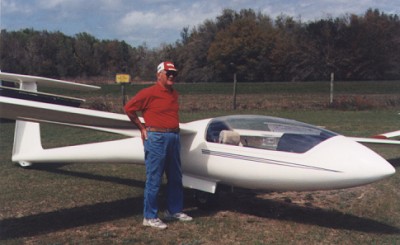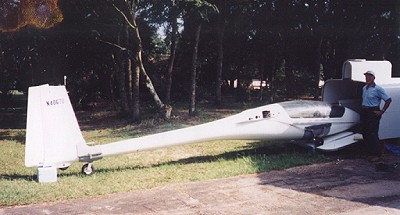 |
|
 |
|
| - What's New
- About Chapter 108 - Contact Us - Calendar - Newsletters - Projects and Planes - Safety/Regulations - Scrapbook - Young Eagles - For Sale - Links - Home |
 Model: SZD 52 Krokus Bill Reeder's SZD-52 Krokus
Sound scary? Not to Bill Reeder. All of his landings are dead-stick. You see, Bill Reeder flies an SZD-52 Krokus sailplane.  Bill's Krokus was one of a group of several similar prototypes manufactured by SZD. Three of the prototypes had a "normal" tail, three had a "T" tail and three were built a little heavier than normal in an attempt to achieve a better Reynolds number. This particular plane is the only one of the "T" tail prototypes still flying. Some of the interesting features of the Krokus are the flaps and the ballast. The Krokus has flaps that flex the top wing skin instead of using hinges. The flaps, however, are not used for landing; they are adjusted to achieve a better glide ratio. (The plane is slowed for the landing approach by the spoiler.) Because this sailplane was designed for racing, water ballast is added to increase the airspeed at which the best best lift/drag ratio is attained. Both wings are removable for storage.
|